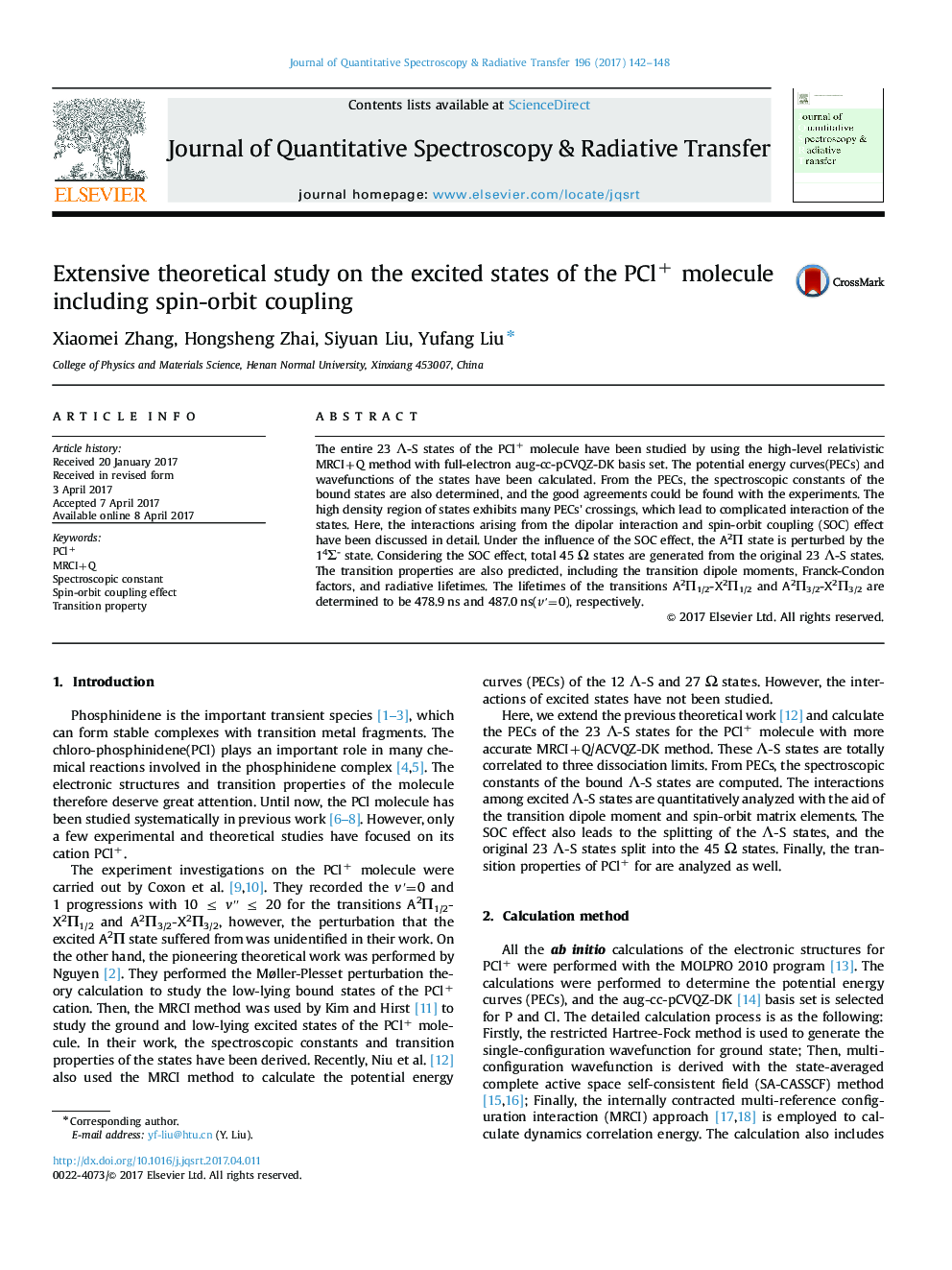| Article ID | Journal | Published Year | Pages | File Type |
|---|---|---|---|---|
| 5427188 | Journal of Quantitative Spectroscopy and Radiative Transfer | 2017 | 7 Pages |
â¢Total 23 Î-S states of the PCl+ molecule have been studied with the MRCI+Q method.â¢The couplings of the states were analyzed via dipolar interaction and SOC effect.â¢The perturbation that the A2Î state suffered from has been identified.â¢The SOC effect makes 23 Î-S states split into 45 Ω states.â¢The lifetimes of the transitions A2Î 1/2-X2Î 1/2 and A2Î 3/2-X2Î 3/2 were determined.
The entire 23 Î-S states of the PCl+ molecule have been studied by using the high-level relativistic MRCI+Q method with full-electron aug-cc-pCVQZ-DK basis set. The potential energy curves(PECs) and wavefunctions of the states have been calculated. From the PECs, the spectroscopic constants of the bound states are also determined, and the good agreements could be found with the experiments. The high density region of states exhibits many PECs' crossings, which lead to complicated interaction of the states. Here, the interactions arising from the dipolar interaction and spin-orbit coupling (SOC) effect have been discussed in detail. Under the influence of the SOC effect, the A2Î state is perturbed by the 14Σ- state. Considering the SOC effect, total 45 Ω states are generated from the original 23 Î-S states. The transition properties are also predicted, including the transition dipole moments, Franck-Condon factors, and radiative lifetimes. The lifetimes of the transitions A2Î 1/2-X2Î 1/2 and A2Î 3/2-X2Î 3/2 are determined to be 478.9 ns and 487.0 ns(v'=0), respectively.
Graphical abstractThe enlarged PECs' crossing in the high density region of electronic statesDownload high-res image (216KB)Download full-size image
